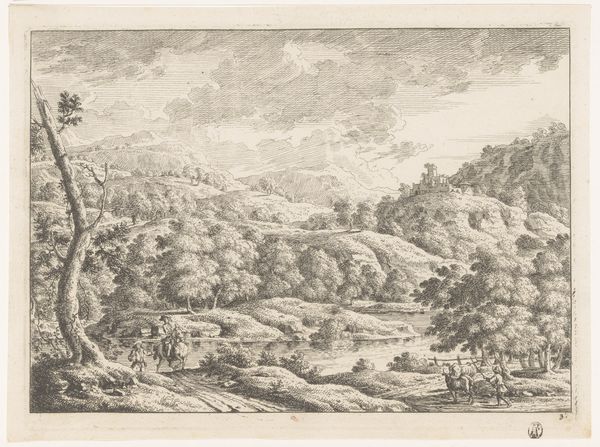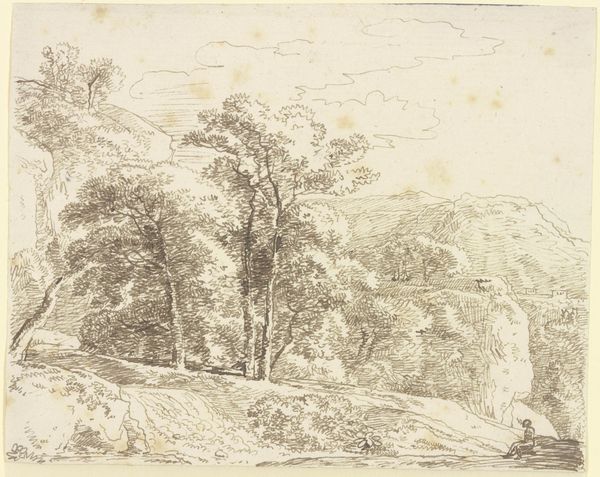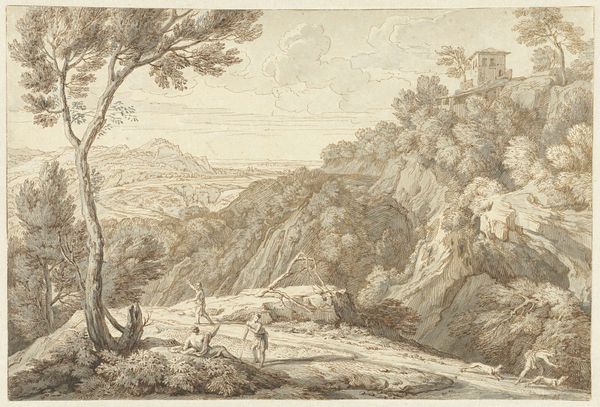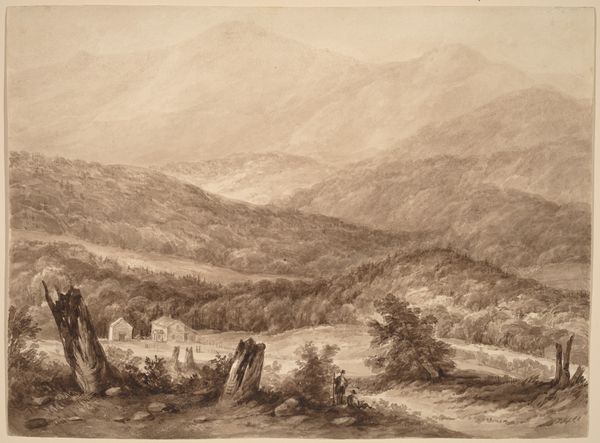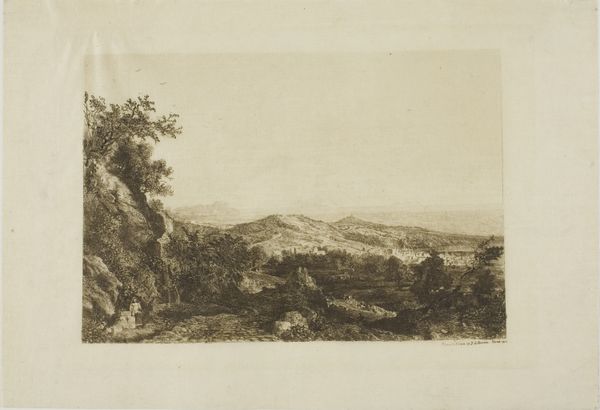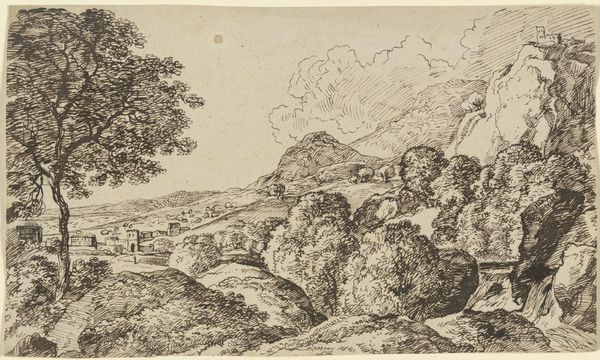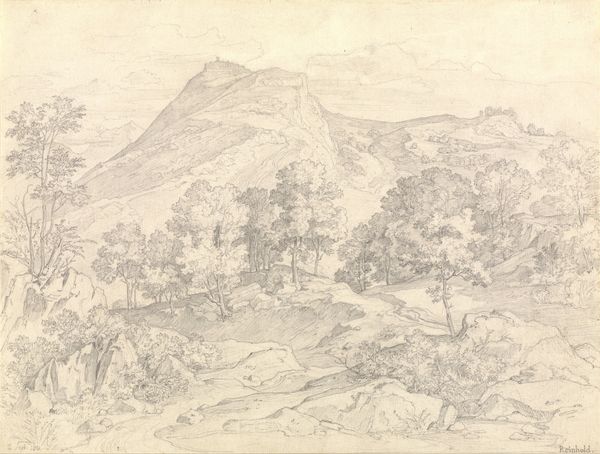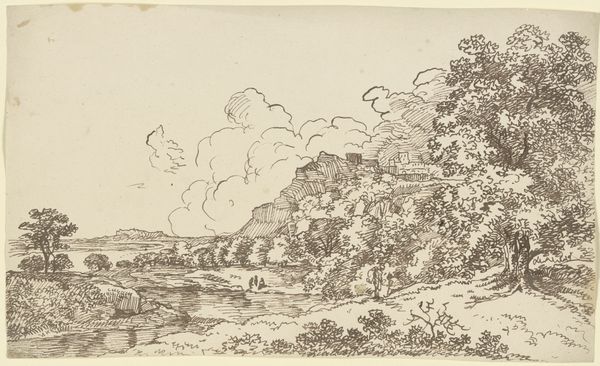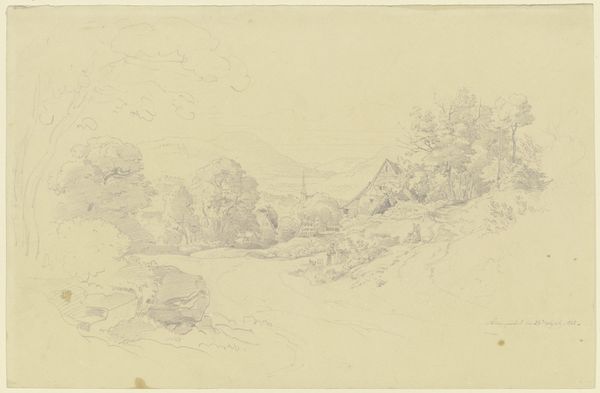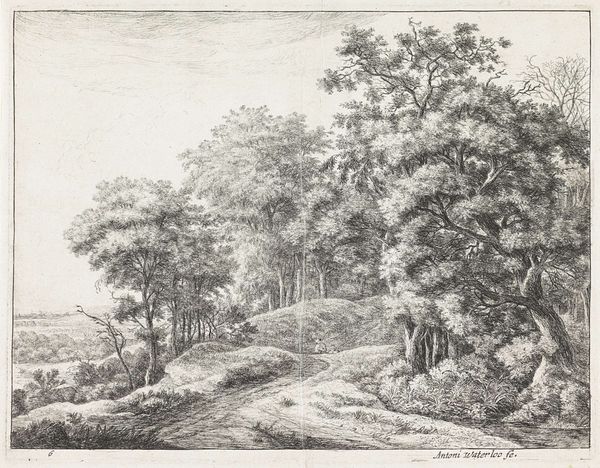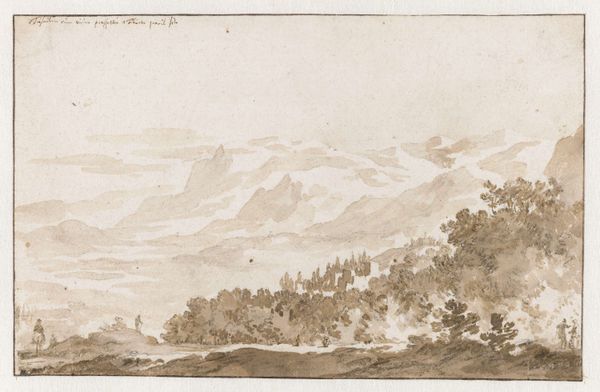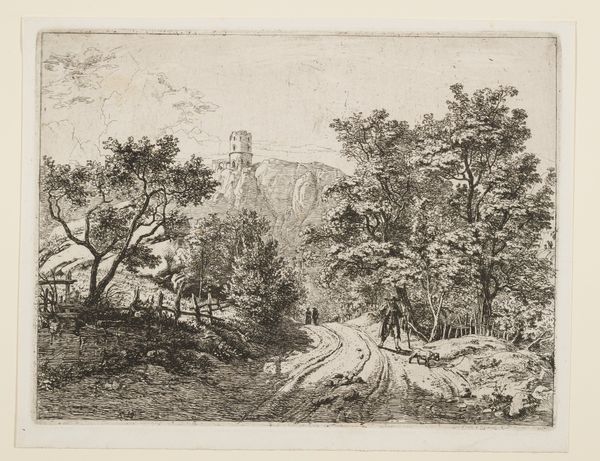
Landscape with Wooded Hills, Seated Figure 1756
0:00
0:00
drawing, print, etching, paper, ink, pen
#
drawing
# print
#
etching
#
landscape
#
classical-realism
#
paper
#
form
#
ink
#
pencil drawing
#
pen-ink sketch
#
line
#
pen
Dimensions: 207 × 313 mm
Copyright: Public Domain
Curator: What a beautifully rendered landscape; it's peaceful, almost dreamlike. Editor: It is indeed. This is "Landscape with Wooded Hills, Seated Figure," created around 1756 by Nicolaes Emmanuel Perij. It's an etching printed in ink on paper. I find it fascinating to consider the socio-economic factors at play. The paper, ink, and the printing press itself, all represent layers of industrial processes and material consumption available to artists in the mid-18th century. Curator: Absolutely. And Perij masterfully utilizes those materials. Look at the lines! The meticulous detail in the trees and the subtle shading of the hills – it’s all so delicately executed. He captures form so elegantly using line. Note the almost feathery lightness in the clouds versus the denser texture used to render the rocks. Editor: Yes, and the composition implies an entire network of labour—from paper production to distribution. Someone had to make that paper, transport the ink. Then, of course, there's Perij himself; the engraver learning a trade that had cultural prestige even while relying on material outputs for production. We need to examine how that artistic labour functioned in 18th century markets. Curator: I see your point, and it does prompt fascinating lines of inquiry. But the eye is so expertly guided through the composition! The lone seated figure—seemingly lost in thought—adds such a sense of scale and solitude, while that line guides our gaze back to the artist’s emblem on the hill. And this careful rendering, creating depth, mood and composition, suggests more than mere illustration. Editor: Perhaps, though these aesthetic qualities were commodities too. That atmospheric perspective wasn’t separate from the societal value that landscapes commanded, the colonial gaze always informing their perspective, from the material production, all the way up to the lines themselves. Curator: A sobering thought, certainly, and a welcome change of perspective, when all too often one loses oneself merely in visual beauty. Editor: Indeed. Thinking of art as always a reflection of labour practices makes these quiet, intimate moments depicted on the landscape feel newly rich, don’t you think?
Comments
No comments
Be the first to comment and join the conversation on the ultimate creative platform.
